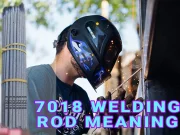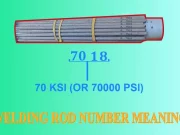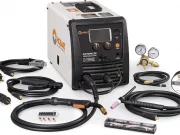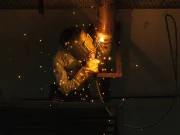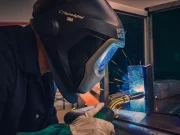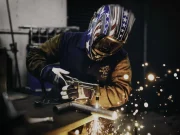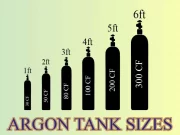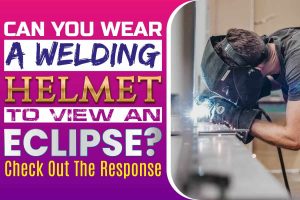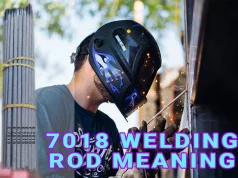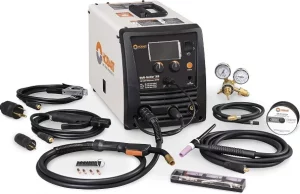We always differentiate day and night because of light. However, there are periods when it can be dark during the day.
If you’re lucky to have witnessed darkness during the day, chances are you have witnessed an eclipse.
An eclipse happens when a celestial body moves in front of another or between two other celestial bodies, casting its shadow on the planet.
An eclipse is an epoch event, and everyone wants to view it. However, NASA warns against viewing an eclipse with your naked as it can damage your eyes.
Now, let’s set the record straight.
Can you wear a welding helmet to view an eclipse?
You can view an eclipse with a welding helmet. NASA recommended glasses for viewing an eclipse are expensive. So if you have access to a welding helmet, you might as well use it.
However, ensure that your helmet meets NASA requirements. NASA recommends that your gear should have a minimum shade value of 12. Using any glasses with a shade value less than 12 could damage your eyes.
Generally, shade 13 glasses are best for viewing an eclipse, but shade 12 is safe enough. Shade 14 glasses are too dim and they will not give you the best viewing experience.
What are the different types of eclipses? Continue reading to know more.
Types Of Eclipses
There are two types of eclipses – the solar and the lunar eclipse.
1. Solar Eclipse (Eclipse of the Sun)
A solar eclipse appears when the moon orbits between the sun and the earth, blocking the sun from the earth.
As the moon circles the earth, it comes to a point when it orbits between the earth and the sun, casting a big shadow on the earth.
There are three types of solar eclipses – partial, total, and annular solar eclipse.
Partial solar eclipse: This type of eclipse happens when there is a partial alignment between the sun, the moon, and the earth. The moon does not completely shield the sun in this case.
The partial eclipse of the sun occurs more often than types of the solar eclipse. You may not notice it as the moon’s penumbra causes it.
This outer shadow is light and covers only a part of the sun. When compared to the intense ray of the sun, things on earth may seem normal.
However, if you view the sky at the time predicted using NASA recommended glasses or a shade 13 helmet, you will spot the eclipse in all its beauty.
Total solar eclipse: Total solar eclipse occurs when the moon, the sun, and the earth align completely with each other.
The moon blocks the sun entirely, and it keeps the earth dark for as long as it lasts. The total solar eclipse can last for a few minutes before the moon gradually moves over the sun.
A total eclipse is rare, and you can only experience it if you are in the thick part of the moon’s shadow – also called the umbra.
Annular solar eclipse: This type of eclipse occurs when the moon orbits at apogee or farthest away from the earth.
At this position, the moon looks smaller and does not completely cover the sun. It leaves a ray of sunlight around the sun, making it look like a ring.
2. Lunar Eclipse (Eclipse of the Moon)
A lunar eclipse takes place when the earth moves between the moon and the sun. The earth blocks the sun and casts its shadow on the moon. You can only view a lunar eclipse at night, and it can only occur when the moon is full.
There are three types of lunar eclipse – penumbra, partial, and total lunar eclipse.
Penumbral lunar eclipse: Penumbra is the brushing off of the moon on the earth’s outer shadow. This occurrence precedes a partial, full, or just a penumbral lunar eclipse.
A small part of the moon darkens, and it gradually moves around the corner of the moon till a full moon is restored.
Partial lunar eclipse: This type of lunar eclipse occurs when the moon is covered largely by the penumbra (the lighter shadow of the earth), and a little part is covered by the umbra (the darker part). When this happens, the moon is partially covered and darker.
Total lunar eclipse: Total lunar eclipse occurs when the moon moves into the penumbra shadow of the earth and moves right into the umbra shadow.
Total lunar eclipse causes a complete darkening of the moon. The sunray reflecting on the earth penetrates the earth and reaches the moon slightly, causing the moon to have a red or orange color. We refer to this phenomenon as the blood moon.
Things To Note About A Solar Eclipse
During a solar eclipse, the moon gives out two kinds of light, the umbra, and the penumbra. The umbra is the darkest section of the moon as it blocks the sun.
This dark shade reduces as it hits the earth, covering just a minute part of the earth. This phenomenon causes a total solar eclipse. Only a few people found on this minute part of the earth will witness the eclipse.
The penumbra is the lighter shade that the moon gives as it covers the sun. This shade increases as it hits the earth, causing a partial, almost non-noticeable solar eclipse on a larger part of the earth.
As the moon circles the earth, it does not travel in a perfect circle. It bends at a point, forming an ellipse shape.
When the moon orbits far from the earth, we refer to it as apogee. When it orbits closest to the earth, it is called perigee.
Occurrences Of Eclipses
The solar eclipse is the rarest type. However, in some areas of the earth, a solar eclipse occurs 2.4 times a year. A total eclipse occurs at least every eighteen months somewhere on earth.
The lunar eclipse is the most common type of eclipse. More people can view the lunar eclipse as it covers a larger portion of the earth. It occurs 2 to 4 times a year somewhere on earth.
A total lunar eclipse lasts longer than a total solar eclipse. While the total solar eclipse lasts for a few minutes, the total lunar eclipse lasts for at least an hour.
Devices That You Can Use To View The Eclipse
There are devices that you can use to view an eclipse safely. The most popular one is an ISO-compliant solar filter/solar eclipse glasses.
You can also use a welding helmet of at least 12 to 13 shade values. You can also view an eclipse through a pinhole projector.
To do this, cut a smooth, clean circle hole out of cardboard or paper. Hold this above your shoulder while backing the sun.
Hold out another piece of paper behind the other one, and you will see the reflection of the sun. To make the sun look bigger, keep both papers far apart.
Caution While Viewing An Eclipse
- Do not attempt to view an eclipse with your naked eyes. It can damage them permanently.
- Do not use sunglasses or even darker glasses to view an eclipse. It will never be dark enough.
- Do not view an eclipse directly with optical devices such as cameras, telescopes, or binoculars.
- Do not also place any optical device in front of the ISO sunglass you are wearing.
- Please read the instructions on the recommended sunglasses properly before using them.
- Do not use solar glasses that are more than three years old, or that are dented.
- Check for the manufacturer’s name and address on the sunglasses before use.
- We advise against viewing an eclipse while standing on a roof.
Some Interesting Facts About An Eclipse
- The North and South poles do not get to see a total solar eclipse.
- Every 18 years and 11 months, similar solar eclipses occur.
- Scientists have predicted that the longest eclipse would occur on the 16th of July, 2186.
- Eclipses often occur on planet Mars, but it is mostly partial because the moon is small.
- Mercury and Venus have no moons. Therefore, they do not experience an eclipse.
- Jupiter, Neptune, Uranus, and Saturn frequently experience eclipses as they have lots of moons.
- Jupiter has the highest occurrence of the eclipse because it has 79 moons.
- An eclipse occurs on Pluto with its moon Charon.
- Scientists have predicted that in 600 million years from now, there will be no more solar eclipses.
- During a total solar eclipse, the animals are confused. They cannot tell whether it is the same day.
Because everywhere is dark, spiders pack up their webs, bats come out of their caves, and they think it is night. When it passes, roosters begin to sing, thinking a new day has dawned.
Conclusion
An eclipse appears when a celestial body moves in front of another or between two other celestial bodies, casting its shadow on the planet.
An eclipse is an epoch event that everyone wants to view. However, NASA warns against viewing an eclipse with your naked as it can damage your eyes.
You can view the eclipse with a welding helmet with a minimum shade value of 12. You can also view it with an ISO-compliant solar filter/solar eclipse glasses. Another way to view an eclipse is through a pinhole projector.


